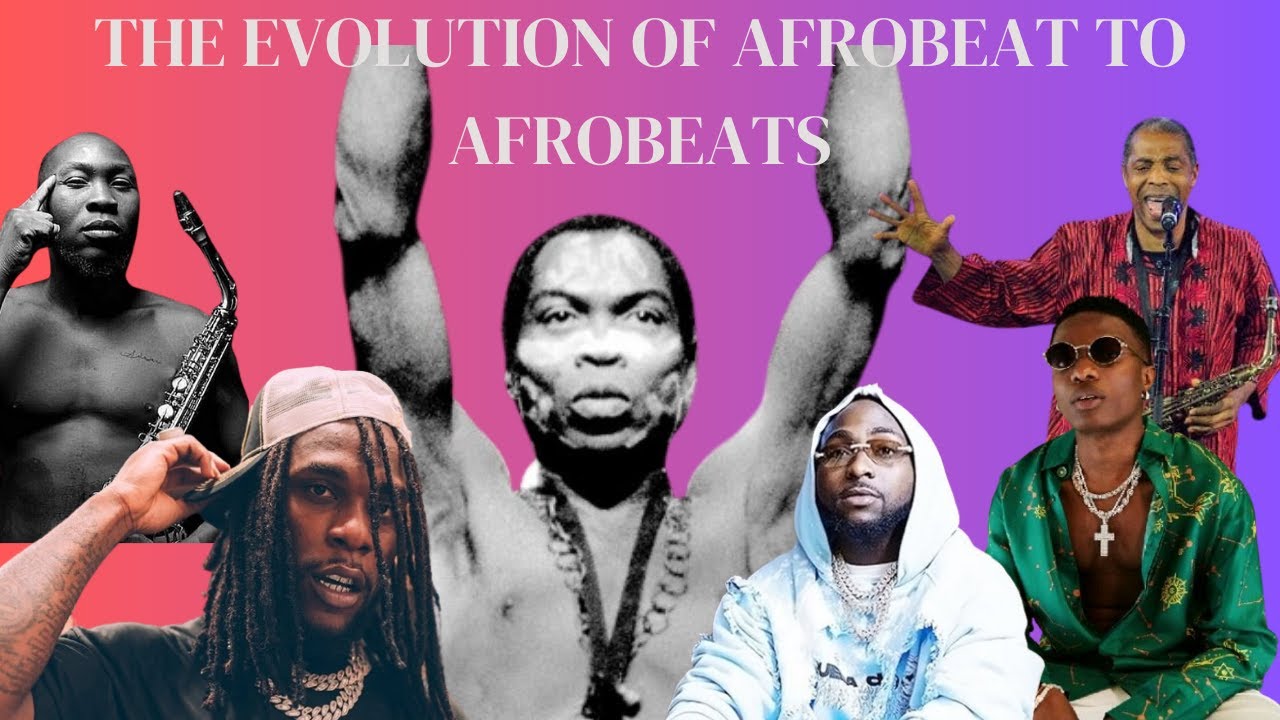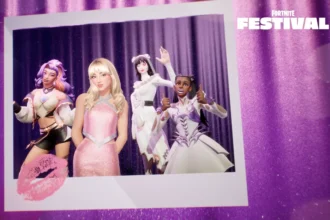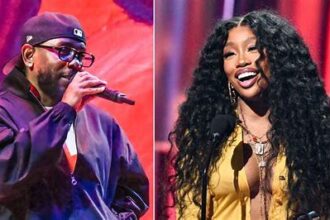Introduction to Afrobeat
Afrobeat is a genre that has gained immense popularity in recent years, captivating audiences with its lively rhythms and diverse influences. Rooted in the musical traditions of West Africa, Afrobeat seamlessly blends elements of funk, jazz, and soul to create a sound that is both unique and universally appealing. Originating in the 1960s and 1970s, the genre has evolved significantly over the decades, yet it has managed to retain its core essence that celebrates African culture and heritage.
The genre’s infectious beats and vibrant energy make it a favorite on dance floors around the world. What sets Afrobeat apart is its intricate use of percussion, layered rhythms, and call-and-response vocals, all of which come together to create a truly immersive listening experience. The genre’s appeal is further enhanced by its ability to incorporate contemporary sounds and production techniques, making it relevant to modern audiences while staying true to its roots.
In the contemporary music scene, Afrobeat has made significant inroads into mainstream consciousness, thanks in part to its biggest sellers and best albums. Artists such as Burna Boy, Davido, and Wizkid have played a pivotal role in bringing Afrobeat to a global audience. Their music not only showcases the rich sounds and rhythms of the genre but also highlights its versatility and adaptability. With chart-topping hits and international tours, these artists have cemented Afrobeat’s place in the global music landscape.
Another key factor contributing to Afrobeat’s rising prominence is its major collaborations with artists from other genres. These partnerships have helped introduce Afrobeat to new audiences and have enriched the genre by blending different musical styles. Collaborations like Wizkid’s “One Dance” with Drake and Burna Boy’s “Be Honest” with Jorja Smith exemplify how Afrobeat can seamlessly integrate with other genres while maintaining its distinctive sound.
Afrobeat’s influence is not confined to music alone; it has also made a significant impact on fashion, dance, and popular culture. The genre’s vibrant aesthetic and energetic performances have inspired a new generation of artists and creatives, further solidifying its cultural relevance. Afrobeat dance moves have become popular on social media platforms, and its fashion elements are frequently seen on international runways.
As the genre continues to evolve, it is attracting a diverse array of artists who are eager to experiment with its sounds and styles. Emerging musicians are pushing the boundaries of Afrobeat, incorporating electronic elements, and blending it with genres like hip-hop, jazz, and funk. This ongoing evolution ensures that Afrobeat remains a dynamic and ever-changing genre, capable of captivating new audiences while staying true to its African roots.
Leading Artists in Afrobeat
Afrobeat has seen an explosion of talent that has taken the genre to unprecedented heights, thanks to the contributions of contemporary artists who have masterfully blended traditional African sounds with modern musical influences. Burna Boy, for instance, has become synonymous with Afrobeat’s global appeal. Known for his dynamic performances and powerful lyrics, Burna Boy’s music resonates with a broad audience, capturing the essence of Afrobeat while pushing its boundaries. Albums like “African Giant” and “Twice As Tall” have earned him both critical acclaim and commercial success, solidifying his status as one of the genre’s most influential figures.
Davido is another powerhouse in the Afrobeat scene. His ability to create infectious melodies and hooks has made him a favorite not just in Africa but globally. Tracks like “Fall” and “If” have dominated airwaves and streaming platforms, showcasing his knack for crafting hits that are both catchy and meaningful. Davido’s collaborations with international artists have further amplified his reach, bringing Afrobeat to new audiences and cementing his place as a key player in the genre’s global rise.
Wizkid stands out as one of Afrobeat’s most prominent ambassadors. His smooth vocal delivery and innovative production have earned him a loyal fan base and numerous accolades. “Made in Lagos,” his critically acclaimed album, highlights Wizkid’s ability to fuse traditional Afrobeat rhythms with contemporary sounds, creating a body of work that appeals to listeners worldwide. His collaborations, such as the chart-topping “One Dance” with Drake, have played a significant role in introducing Afrobeat to mainstream audiences.
Beyond these well-known names, a new generation of artists is emerging, eager to leave their mark on the Afrobeat landscape. Musicians like Rema and Fireboy DML are pushing the genre in exciting new directions, incorporating elements from other musical styles to create fresh, innovative sounds. These young artists are not only expanding the boundaries of Afrobeat but also ensuring its continued relevance in an ever-changing musical landscape.
The collective efforts of these artists have significantly shaped Afrobeat, turning it into a genre that resonates on a global scale. Fela Kuti and Tony Allen are key artists who have significantly shaped Afrobeat. Their music serves as a bridge between traditional African music and contemporary global sounds, creating a dynamic and evolving genre that continues to captivate audiences around the world.
Biggest Sellers and Best Albums
When evaluating the biggest sellers and best albums within Afrobeat, several records have notably stood out for their influence and commercial achievements. Burna Boy’s “African Giant” is a prime example, encapsulating the rich sounds and cultural essence of Afrobeat. With tracks like “Anybody” and “On the Low,” the album has garnered both critical acclaim and widespread popularity, making it a cornerstone in Afrobeat’s modern era. Its success not only propelled Burna Boy into international stardom but also highlighted the genre’s broad appeal.
Another significant contribution is Wizkid’s “Made in Lagos.” This album brilliantly showcases his unique ability to create melodies that are both captivating and reflective of Afrobeat’s vibrant spirit. Songs such as “Essence,” featuring Tems, have achieved massive global success, further cementing Wizkid’s role as a leading figure in the genre. The album’s production quality and innovative soundscapes have set a new standard in Afrobeat, attracting listeners from all over the world.
Davido’s “A Good Time” is another album that has left a lasting mark on Afrobeat. Featuring hits like “Fall” and “Risky,” this record has been instrumental in spreading the Afrobeat sound far beyond African shores. Davido’s knack for creating infectious rhythms and catchy hooks has made this album a favorite among fans, securing its place among the best in the genre.
Additionally, Yemi Alade’s “Woman of Steel” deserves mention for its contribution to Afrobeat. With tracks like “Shekere,” featuring Angelique Kidjo, the album combines traditional African elements with contemporary sounds, making it a standout in the genre. Yemi Alade’s powerful vocals and compelling storytelling have resonated with audiences, further establishing her as a significant Afrobeat artist.
Among the rising stars, Rema’s “Rema Compilation” has also made waves in the Afrobeat scene. This collection of tracks showcases Rema’s innovative approach to Afrobeat, blending it with elements of trap and pop. His fresh take on the genre has not only earned him a dedicated fan base but has also signaled a new direction for Afrobeat, highlighting its versatility and adaptability.
Lastly, Tiwa Savage’s “Celia” album should be highlighted for its impact on Afrobeat. Songs like “Koroba” and “Dangerous Love” have demonstrated her ability to fuse traditional Afrobeat rhythms with modern production techniques, creating a sound that is both familiar and fresh. Tiwa Savage’s contributions have played a crucial role in pushing Afrobeat to new heights, both commercially and artistically.
Major Collaborations in Afrobeat
Collaborations have been pivotal in elevating Afrobeat’s status on the global stage. These partnerships often merge Afrobeat with other musical genres, resulting in unique tracks that capture the essence of both worlds. One of the most iconic examples is Wizkid’s collaboration with Drake on “One Dance.” This track not only became a global hit but also showcased Afrobeat’s versatility, blending seamlessly with Drake’s signature style. The success of “One Dance” opened doors for Afrobeat in international markets, making it a household name.
Burna Boy has also been a key figure in Afrobeat’s collaborative success. His work with international artists has broadened the genre’s appeal. “Be Honest,” a collaboration with Jorja Smith, exemplifies how Afrobeat can integrate with contemporary R&B, creating a sound that is both fresh and familiar. Similarly, Burna Boy’s feature on Stormzy’s “Own It” brought a new dimension to the track, highlighting Afrobeat’s adaptability.
Davido’s collaborations have been equally influential. His track “Blow My Mind” with Chris Brown is a perfect example of how Afrobeat can blend with American pop and R&B. The song received massive airplay and introduced Davido’s music to a wider audience. These collaborations not only elevate the individual artists involved but also shine a spotlight on Afrobeat as a genre.
Tiwa Savage has also made significant strides through her collaborative efforts. Her work with international artists like Sam Smith on “Temptation” and Beyoncé on “Keys to the Kingdom” demonstrates Afrobeat’s global reach and its ability to adapt to different musical styles. These partnerships have been crucial in bringing Afrobeat to new audiences and expanding its influence.
The genre’s collaborative nature isn’t limited to big-name artists. Emerging Afrobeat musicians are also making their mark through innovative partnerships. For instance, Rema’s collaboration with American rapper 6LACK on “Dimension” showcases a blend of Afrobeat with hip-hop elements, creating a sound that is both innovative and captivating. Fireboy DML’s work with Ed Sheeran on “Peru” further exemplifies how Afrobeat can merge with global pop sounds, resulting in tracks that resonate with a diverse audience.
Another notable collaboration is between Mr Eazi and Major Lazer on “Oh My Gawd.” This track blends Afrobeat with electronic dance music, highlighting the genre’s adaptability and broad appeal. Such collaborations are not just limited to music but extend to performances and tours, bringing Afrobeat to international stages and festivals.
The Future of Afrobeat
Afrobeat’s trajectory suggests an exciting and transformative future, as the genre continues to evolve and adapt to new musical landscapes. The infusion of Afrobeat into various genres like hip-hop, jazz, and funk is becoming increasingly apparent, with artists experimenting and pushing the boundaries of what Afrobeat can achieve. This genre-blending approach not only enhances Afrobeat’s versatility but also widens its appeal to diverse audiences.
Emerging artists are at the forefront of this evolution. Rema and Fireboy DML are among those leading the charge, each bringing a unique flavor to Afrobeat. Rema, with his innovative mix of Afrobeat and trap, has captivated a younger audience, while Fireboy DML’s soulful melodies and intricate rhythms have garnered critical acclaim. Their willingness to experiment and blend different musical elements ensures that Afrobeat remains fresh and dynamic, appealing to a broad spectrum of listeners.
The genre’s adaptability is further highlighted by its increasing influence on the global music scene. As Afrobeat elements become more prevalent in mainstream music, we see a growing number of international artists incorporating its rhythms and beats into their work. This cross-pollination of styles enriches the genre, introducing new sounds and perspectives while maintaining its core essence. The global music industry’s embrace of Afrobeat signifies a promising future where the genre is not only preserved but also celebrated and innovated upon.
Additionally, technological advancements in music production have played a crucial role in Afrobeat’s evolution. Modern production techniques allow artists to create more polished and sophisticated sounds, enhancing the overall listening experience. These advancements make it easier for Afrobeat to integrate with other genres, resulting in innovative and captivating music that resonates with a wide audience.
Social media platforms and streaming services have also been instrumental in Afrobeat’s rise. These digital platforms provide artists with the tools to reach global audiences instantly, breaking down geographical barriers and fostering a more connected music community. As more listeners discover Afrobeat through these channels, the genre’s fan base continues to grow, ensuring its longevity and relevance in the global music landscape.
Afrobeat’s future is not just about maintaining its current popularity but also about its potential to inspire and influence future generations of musicians. As more artists explore and reinterpret Afrobeat, the genre will continue to evolve, reflecting the changing musical tastes and cultural trends of the times. This ongoing transformation guarantees that Afrobeat remains a dynamic and integral part of the global music scene.
In summary, the future of Afrobeat looks incredibly bright. With its increasing global influence, the rise of innovative artists, and the support of modern technology and digital platforms, Afrobeat is poised for continued growth and evolution. The genre’s ability to adapt and integrate with other musical styles will ensure that it remains relevant and captivating, promising an exciting future for Afrobeat and its enthusiasts.










